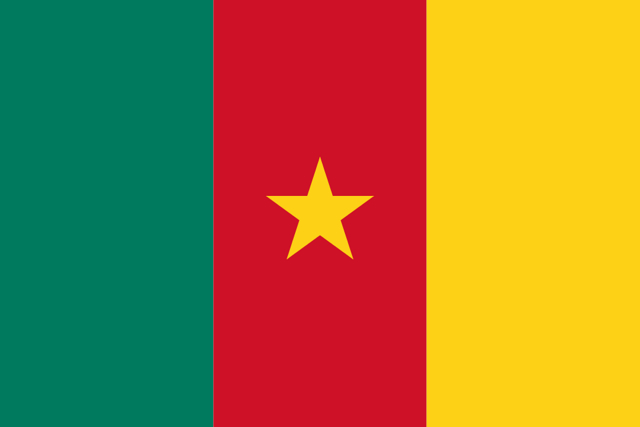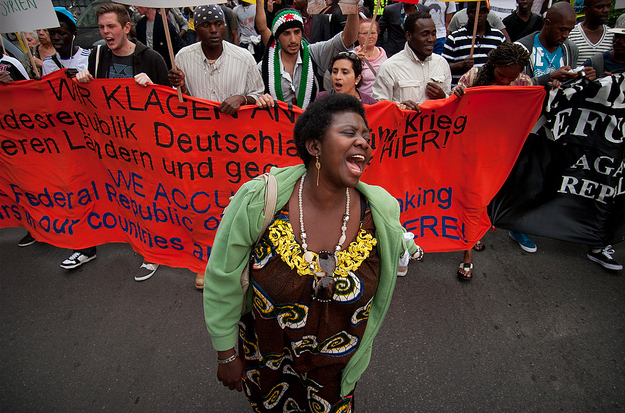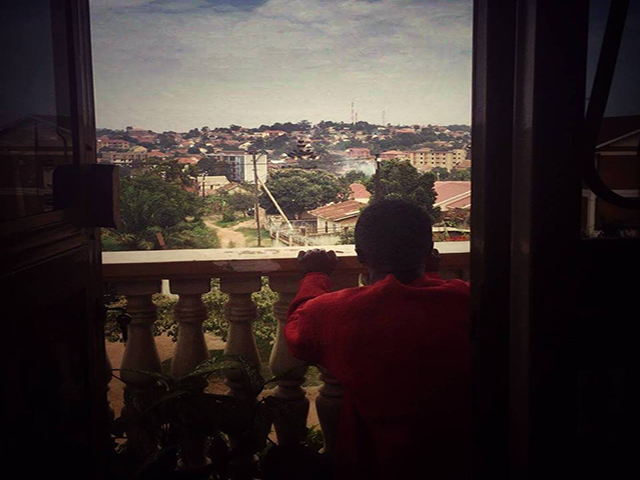Monsieur Richard Ndeudjui, from Makenene in central Cameroon, is a contented man. Thanks to his Moringa leaf tea, he has vanquished the symptoms of his malaria. His son, a student at the University of Yaoundé, brought back the idea and convinced dad to try. Now, Monsieur Richard, as everyone in Makenene calls him, is back doing what he loves: taking care of his flourishing seedling business.
The eyes of this portly, fiftyish man light up as he shows off his new experimental cocoa grafts, his neat rows of marcots ready for sale, and the vigorous seedlings of safou, moringa, njansang, bitter kola, cocoa, plantain and half a dozen other species he is raising. His frames are full of fresh cuttings, his cocoa trees are shaded by coconut, oil palm and timber trees, and everywhere is a sign of the love that Monsieur Richard brings to his work. He has become a well-known and respected man in late middle age, his fame spreading along the road well beyond Makenene’s boundaries. Farmers come from as far as Yaoundé to buy his plants.
Richard Ndeudjui may not look like one, but he is a revolutionary. What he is doing on his small farm far exceeds in intelligence what most of the world’s big industrial farmers are up to. His small plot is producing more value per unit of land than even the most productive cereal fields of the American Midwest. Cargill and Monsanto may not yet know it, but Monsieur Richard is the future.
It was not always thus. When Monsieur Richard, a mechanic by trade, returned from Yaounde, he had saved enough to buy a couple of hectares of land in his home town. But he was barely getting by. His cocoa was prone to diseases and not very productive, and while his plantain and cassava made sure that at least the family would have enough to eat, life was a struggle. Sending his children to school he could – just – afford. But university? That was an impossibility. And replacing his small mud house a distant dream. Monsieur Richard was not miserable. He has a sunny, optimistic disposition. But he was dirt poor, and it looked like his children would share his fate.
What changed Mr Richard’s life was a chance encounter back in 2003 with some decidedly unusual crop scientists. Unlike their traditional colleagues, the people from the World Agroforestry Centre‘s Yaoundé branch did not want him to clear his land. They did not come bearing gifts of fertilizer or pesticides, and did not advise him to create a cooperative to, say, buy a tractor. Instead, they asked him questions. What crops do you prefer? What problems do you have? Where do you get your planting material? How do you reproduce it?

Like all farmers in this part of the world, Mr Richard had a few favorite trees producing bitter kola (a mild stimulant that is traded across central and west Africa), safou (a blue fruit whose baked flesh tastes like avocado with a strong dose of lemon juice,) njansang (whose nut is highly prized as a tasty food thickener) and cocoa (the region’s major staple crop.) But these favored trees were scattered here and there in the bush, not even always on his own fields, and were getting old. Mr Richard, like everyone else around here, had no idea of how to increase their productivity. He was thinking of switching to cash crops like coffee – something that exposes farmers to disastrous international price swings. When the price collapses, you go hungry: you can’t eat coffee.
As you wander between his seedling beds, listening to Monsieur Richard tell how he loves watering his seedlings at night, when the town is quiet and the moon is shining, you are struck by what a curious man he is. His experiments are everywhere: new cuttings, new grafts, new marcots, new ways of drawing water. When the weather is right – not too wet, not too hot – he hitches his machete, knife, bags and boxes to his back and strides off into the bush, bringing back cuttings of particularly productive trees, or placing marcots on their branches.
Monsieur Richard is becoming something of an artist, one who paints on landscapes with the brushes of tree selection and reproduction. Since he started in 2003, he tells me proudly, hundreds of farmers have planted his trees in the surrounding lands. The landscape I gaze upon is one that is slowly being transformed by his art. And Monsieur Richard’s farm? A new house, a motorbike, satellite TV, two kids at university – and a growing pot belly. Yes, he confirmed with a sonorous laugh, he was now a prosperous man, with lots of friends and enough money saved for a rainy day.
This miracle did not grow in a biotech lab. It was not the result of a massive mechanisation effort. Forget new GMO seeds or the latest pesticides: it came from right inside Richard Ndeudjui’s head.
What made it possible is a technique pioneered by the Camerounian World Agroforestry people which is now being rolled out in more than a dozen other countries in Asia, Africa and Latin America: farmer-managed domestication. Instead of telling the farmers what to grow, they limit their role to teaching the farmers basic techniques – such as growing cuttings in frames, grafting, marcotting, and rearing seedlings – and thereafter act as mentors, not experts, helping the farmers understand how best to combine various trees and crops on their land. The job of selecting which trees to multiply this way is left entirely to the farmer. Indeed, often the experts have no idea where the donor trees are. Until trust is fully established, the farmer will not reveal their location. They are too precious.
Global agriculture is facing an increasingly serious set of crises: more mouths to feed, massive erosion, exhausted soils, huge greenhouse gas emissions, and the growing blows of climate change: droughts, heat waves, torrential storms and more. Most of the land suitable for agriculture, worldwide, is already being cultivated. These problems are being discussed in endless global fora, with little to show for them. Desperate governments are upping spending on traditional agricultural research. But, despite new seeds, new inputs, and new machinery, the return on these research investments is lower than it has ever been. Food prices keep reaching new highs, condemning hundreds of millions more to hunger.
Mr Richard knows the broad outlines of that story, but is not worried. He, like the other 400 seedling farmers across Cameroon trained by the agroforesters and the hundreds of thousands of smallholders that use their products and methods to multiply their own trees, will be fine. He does not depend on a single crop, distant markets or the products of rapacious seed companies. His costs are low, his land is resilient, and his income is growing.
The astounding productivity of farmer-managed domestication boils down to a simple fact: the natural variability of undomesticated food plants is much, much higher than that of staple crops like wheat, corn or rice. These were domesticated thousands of years ago. A few highly specialized varieties dominate global farmlands. Getting new characteristics into such specialists is extraordinarily hard – it is like trying to breed a Great Dane out of Chihuahuas. That’s why genetic engineering is spoken of so often: yes, it’s enormously expensive and complicated, but it is now often the only effective way of turning, say, a wheat chihuahua into a wheat great Dane. It’s a lot easier to start with wolves – if you have some handy.
The trees and other local crops that the farmers select have not yet been domesticated. They are like wolves. Their natural variability is huge: some will have bitter fruits, other sweet ones; they will produce a lot, or a little; early, or late, etc. Out of that natural bounty, selecting the most suitable varieties is easy. And since different farmers will be interested in different characteristics, the process gives rise to hundreds of newly domesticated varieties.
Around the world, over 20,000 plants are being used as food. Less than 1% of them have been domesticated. And of those, less than a dozen account for over 90% of global calories. I cannot think of a more perfect set-up for a global catastrophe: all it takes is a particularly obstreperous virus that wipes out the global corn crop, say, or the potato (hate Irish remember that one well). Make no mistake: this will happen, one day. Unless we all learn from Monsieur Richard.
Photographs courtesy of Wikipedia and Patrick Worms. Published under a Creative Commons license.






Brilliant article, inspiring and very much to the point!